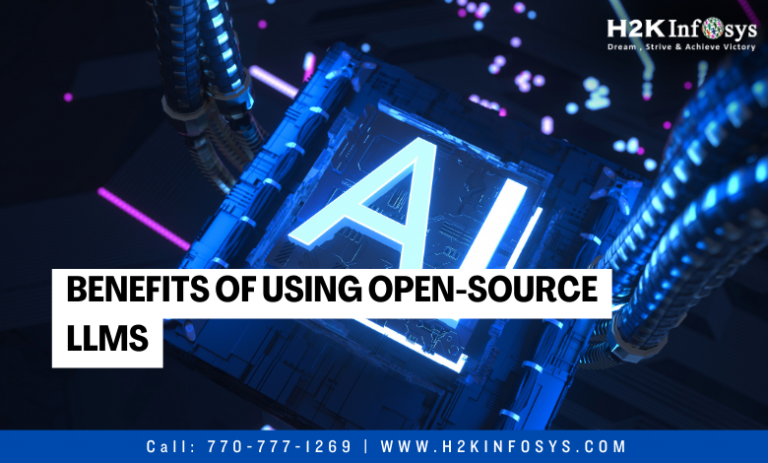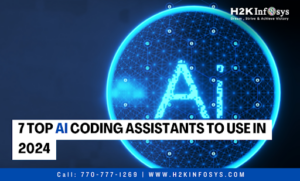Large language models, or LLMs, are essential to the present revolution in generative AI. Language models and interpreters (LLMs) are artificial intelligence (AI) systems that are based on transformers, a potent neural architecture. Because of their hundreds of millions or even billions of pre-trained parameters (obtained from a vast corpus of text data), they are referred to as “large.”
The basic models of widely-used and well-known chatbots, such as Google Bard and ChatGPT, are LLM. In particular, Google Bard is built on Google’s PaLM 2 model, whereas ChatGPT is driven by GPT-4, an LLM created and owned by OpenAI. To learn more, check out the Artificial Intelligence online training.
The proprietary underlying LLM of ChatGPT, Bard, and numerous other well-known chatbots are shared by them. This indicates that they belong to a business and that clients can only use them with a licence that they have purchased. Along with rights, that licence may also impose limitations on how the LLM is used and provide access to certain technical details.
However, open-source LLMs are a parallel trend in the LLM arena that is quickly gaining traction. Open-source LLMs promise to improve accessibility, transparency, and innovation in the rapidly expanding field of generative AI and LMMs, in response to growing concerns about the opaque nature and restricted availability of proprietary LLMs, which are primarily controlled by Big Tech companies like Microsoft, Google, and Meta.
We will examine the best open-source LLMs that will be accessible in 2024. Even though ChatGPT and (proprietary) LLMs have only been around for a year, the open-source community has already accomplished significant strides, and there are now a sizable number of open-source LLMs accessible for a variety of uses.
The decision to switch from proprietary to open-source LLMs has several short- and long-term advantages. The following is a summary of the strongest arguments:
1.Enhanced data security and privacy
The possibility of data leaks or illegal access to sensitive data by the LLM supplier is one of the main worries when utilising proprietary LLMs. In fact, there have already been a number of disputes over the purported use of private and sensitive information for training.
Companies that use open-source LLM will maintain complete control over their data, making them fully accountable for its protection.
2.Cost savings and reduced vendor dependency
To utilise the majority of proprietary LLMs, a licence is needed. Long-term, this can be a significant cost that some businesses—especially SME ones—might not be able to bear. Open-source LLMs, on the other hand, are typically free to use, therefore this is not the case.
It’s crucial to remember that running LLMs demands a lot of resources, even just for inference, therefore using strong infrastructure or cloud services will typically come at a cost.
3.Code transparency and language model customization
Companies who choose open-source LLMs will have access to all of the LLM’s internal components, including as the architecture, training data, and training and inference mechanisms. The initial stage towards both inspection and customisation is transparency.
Companies that use open-source LLMs can modify them to fit their specific use cases because everyone has access to them, including their source code.
4.Active community support and fostering innovation
The promise of the open-source movement is to make generative AI and LLM technologies more widely accessible and usable. Enabling developers to examine the internal operations of LLMs is essential for the advancement of this technology in the future. Open-source LLMs can promote innovation and enhance the models by decreasing biases and raising accuracy and overall performance by lowering entry barriers to coders worldwide.
5.Addressing the environmental footprint of AI LLMs
Since LLMs have become more widely used, scientists and environmental activists have expressed worry about the water and carbon footprint these technologies demand to operate. Rarely do proprietary LLMs release data about the environmental impact and resources needed to operate and train LLMs.
Researchers have more access to this data thanks to open-source LLM, which may pave the way for future developments aimed at lessening AI’s environmental impact.
Conclusion
The field of open-source LLM is growing quickly. There are currently far more open-source LLMs than proprietary ones, and as developers work together globally to improve existing LLMs and create more optimised ones, the performance difference may soon be closed.
The movement of open-source LLMs is quite interesting. Given their quick development, it appears that large companies with the resources to create and employ these potent instruments won’t always control the generative AI market. Check out the online AI course to learn more.





























